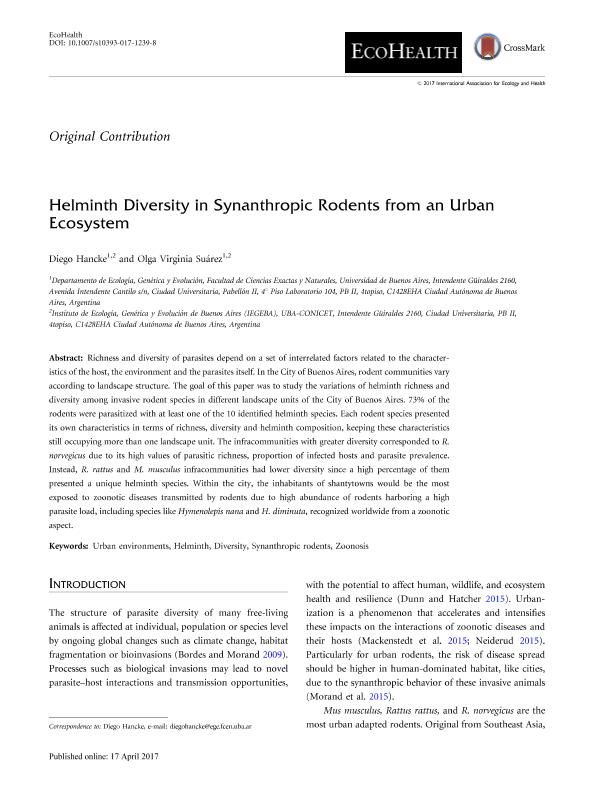Artículo
Helminth Diversity in Synanthropic Rodents from an Urban Ecosystem
Fecha de publicación:
09/2017
Editorial:
Springer
Revista:
Ecohealth
ISSN:
1612-9202
Idioma:
Inglés
Tipo de recurso:
Artículo publicado
Clasificación temática:
Resumen
Richness and diversity of parasites depend on a set of interrelated factors related to the characteristics of the host, the environment and the parasites itself. In the City of Buenos Aires, rodent communities vary according to landscape structure. The goal of this paper was to study the variations of helminth richness and diversity among invasive rodent species in different landscape units of the City of Buenos Aires. 73% of the rodents were parasitized with at least one of the 10 identified helminth species. Each rodent species presented its own characteristics in terms of richness, diversity and helminth composition, keeping these characteristics still occupying more than one landscape unit. The infracommunities with greater diversity corresponded to R. norvegicus due to its high values of parasitic richness, proportion of infected hosts and parasite prevalence. Instead, R. rattus and M. musculus infracommunities had lower diversity since a high percentage of them presented a unique helminth species. Within the city, the inhabitants of shantytowns would be the most exposed to zoonotic diseases transmitted by rodents due to high abundance of rodents harboring a high parasite load, including species like Hymenolepis nana and H. diminuta, recognized worldwide from a zoonotic aspect.
Palabras clave:
Diversity
,
Helminth
,
Synanthropic Rodents
,
Urban Environments
,
Zoonosis
Archivos asociados
Licencia
Identificadores
Colecciones
Articulos(IEGEBA)
Articulos de INSTITUTO DE ECOLOGIA, GENETICA Y EVOLUCION DE BS. AS
Articulos de INSTITUTO DE ECOLOGIA, GENETICA Y EVOLUCION DE BS. AS
Citación
Hancke, Diego; Suarez, Olga Virginia; Helminth Diversity in Synanthropic Rodents from an Urban Ecosystem; Springer; Ecohealth; 14; 3; 9-2017; 603-613
Compartir
Altmétricas




